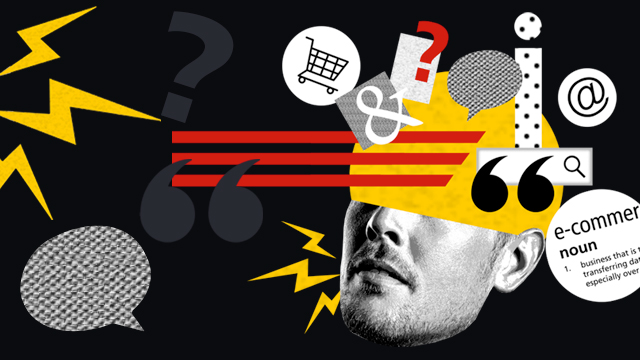Social media can be an extremely cost-effective and rewarding marketing channel for your e-commerce business. But are you making the most of every opportunity? And how do you choose the right platform to reach your target customers? Read on for a best practice guide to creating a social media strategy that boosts your sales.
Social media is the jewel in marketing’s crown. Just in case you need convincing: 71% of consumers who have had a positive interaction with a brand on social media are likely to recommend the brand to family and friends1, and 76% of (US) consumers have purchased a product they discovered in a brand’s social media post2 – to name just two of the statistics you should be excited by.
The key to building your brand’s digital presence is customer engagement, and social media platforms are THE place to do that - as long as what you say resonates with your customer and goes beyond boring sales waffle.
The global growth of e-commerce during the pandemic means that now more than ever, brands should be investing in their online channels. We spoke to Matt Hurst, Paid Social Manager at digital marketing agency Dark Horse3, who has seen first-hand the transformation within the industry in recent months. “The pandemic has shifted the world into a digital lifestyle, and in an effort to remain ever-present, we’ve seen brands take an unfiltered approach to content. The value of its authenticity has certainly grown during the current era of empathy and social consciousness.”
So, with social media more relevant than ever, what’s the secret to creating impactful content? What will resonate the most with your audience and turn their interest into real sales? Read on for our guide to leveraging social media to grow your e-commerce business.
1. BRAND AWARENESS
Social media platforms provide an easy – and relatively cheap – way to build buzz around your product or service amongst a wide audience, and drive them to your main e-commerce website (although you may be selling directly on social – more on that later). The unique thing about social media is the ability to communicate and interact with your audience directly, in exactly the way you would like. It's a place to tell your brand’s story in the way you want - and the more imaginative, the more creative, the more original, the better! These top tips should get you started…
Finding your customers. Firstly, you need to identify which platform(s) will best connect you to your target customers. Conducting a competitor analysis will show you which social media platforms brands like yours are using to reach customers, what content they’re sharing, and what conversations they’re involved with. You can integrate the best practices learned here into your own social media advertising. Find our template to conduct a competitor analysis right here!
Think ‘storytelling’. Social media platforms are where you should share your brand’s message with authentic and engaging content. Telling people about your products is fine, of course, but try to think of how you draw users in by telling the story of your brand and the ideas behind your products. Pangaia4 is an innovative clothing company with a commitment to using sustainable materials for its products. It uses its Instagram photos to tell the stories behind the materials, where they’re sourced, and how they’re better for the environment. It combines this with a powerful influencer marketing strategy, capitalising on its popularity with the likes of Pharrell Williams and Justin Bieber. It helps the audience to connect with the brand on a deeper level, then provides the opportunity for readers to share content organically.
Be personal. Online fashion retailer SilkFred5 spends a lot of time talking to customers and answering their queries on Instagram, and always signs off each response with the name of the customer service member writing it. The brand’s social media team monitors conversations between customers on the platform and jumps in with compliments and styling suggestions where appropriate. This is one of the key aspects of a successful social media strategy – don't assume people will flock to your Instagram business account or your Facebook page just because you built it; you’ll need to work to get the attention of an audience with a notoriously short attention span. Look for pages or channels where your target market gathers, and engage with the conversations they’re already having. Like, comment and share to become part of their community.
Show your product in all its glory. It may seem obvious, but your social advertising images have to be thumb-stoppingly good to gain the interest of your market, so carefully consider how you're going to present yourself. One of the best ways to do this is to use the right content in the right place: Facebook videos attract more attention than images or long copy, Instagram photos can present your products as a lifestyle choice, and Twitter’s news feeds are a great way to keep your customers informed of new products or offers. Furniture company Maker&Son6 has flooded its Instagram page with slow-motion videos of people running and jumping onto its sofas, before sinking into their giant cushions. The message is loud and clear – look how comfy our sofas are! Simple, yet effective – you don't have to spend a lot of money on social advertising, but you should invest time and effort into making it as interesting as possible.
Use it to learn more about your customers. “Social media platforms are an easy way to get reviews, comments, feedback and just hear what your customers have to say” says Petra Odak, Chief Marketing Officer at Better Proposals7. Analyse the data on a regular basis to understand how your audience behave - what content they like and what content they ignore - then use these insights to improve and evolve your products.
Be fun! Last, but by no means least, remember that social media is a platform where people go to be entertained. E-commerce checkout company Fast8 recently took to Twitter to explain its service using only GIFs from the musical Hamilton, prompting likes and retweets from users and gaining earned media coverage from others who admired the inventive approach. People like sharing funny content, so don’t be afraid to use memes and GIFs if they suit your brand. You can also retweet, like, share and repost others’ content to give your own social media feeds a boost – just remember to put a little strategy behind it; share content that is relevant to your brand or product, not just things you find entertaining. The goal is to share content that offers value to your followers: the more useful they find your social media channels, the more time they’ll spend interacting with your posts, which builds trust and loyalty for your brand.
2. USING SOCIAL INFLUENCERS TO BOOST YOUR BRAND'S PROFILE
It’s not just your own social media channels that can raise awareness of your brand – you can use those of others to your advantage, too.
Love it or hate it, influencer marketing is hugely powerful, particularly on Instagram. 49% of consumers depend on influencer recommendations to confirm their buying decisions9, so paying someone with a large social media following to endorse your product can be extremely rewarding for your business – providing their audience reflects your target market.
Influencer marketing may seem like a quick path to raising brand awareness – essentially the influencer has already done the groundwork to create and nurture trust with their followers which you’re then piggy-backing on – yet, brands should be careful to adopt it as part of a wider social media strategy. Alex Packham, Founder and CEO of marketing technology company ContentCal10, explains more as we chat on the phone: “Yes, influencer marketing is big right now, but it’s often done in isolation, which can lessen its impact. So, the next big trend will be the maturity phase of social media marketing, which means applying much better thought out, holistic planning tactics. From a brand perspective, when you launch a campaign, you want a holistic approach to organic, paid and influencers, and the conversion optimisation of those channels from brand awareness into customers actually buying something.”
So, be sure to remember the bigger picture. Influencer marketing can be a quick win, but to build long-term customer relationships, it should work alongside other social media activations.
Affiliate marketing is another way to leverage third-party content publishers to drive traffic to your e-commerce website. Affiliate marketing is the practice of asking influencers, bloggers and other content creators to post links to your product on their own platform in exchange for a portion of the sales generated – and it just so happens that we’ve written a guide on this too.
3. SELLING DIRECTLY ON SOCIAL MEDIA PLATFORMS
Beyond raising awareness of your brand, many of the leading social media platforms now allow e-commerce businesses to sell directly to customers through shoppable posts. Instagram alone has over 1 billion users, and over 80% of them use the app to make purchases or to look at products they plan to purchase in the near future11. That’s a huge customer base you should be tapping into – if you don't have an Instagram for business account, get one!
But which social media platform is right for your e-commerce business to sell on?
The beauty of social media platforms is the vast quantity of user data they retain which you can utilise to find and segment your target market. Alex Packham believes such data capabilities will influence the direction social media marketing takes in the future: “Looking ahead, I think we can expect to see social continue to become more of a performance-driven marketing channel as opposed to awareness/community management focused, as it has been viewed historically. This will come with advancements in machine learning, both in organic algorithms and from a paid advertising perspective, meaning it's easier and more effective to serve the right content to the right users, under the correct conditions.”
The Pew Research Center for Internet and Technology12 has a handy website which allows you to research the demographics of different social media users to determine where your target customers are spending their time online. You can also use a market intelligence solution such as SimilarWeb13 to identify the different social media platforms’ audience demographics and market share. And our exclusive guide to the world’s leading social media platforms summarises their audience base, the benefits of selling on each one, and tips to get you started. Once you know where your target market is, you’re good to go!
Together, the social media marketing channels mentioned above can work together to help your e-commerce business grow. Treat each touchpoint as part of a holistic strategy and you will be rewarded with authentic customer relationships that will increase your sales in the long term.
Social media should be just one part of your brand’s growth strategy. Speak to a DHL expert today to discover other ways to help your business expand globally.
References:
1 - Lyfe Marketing, August 2019
2 - 2017 Curalate Consumer Survey, Business Wire, November 2017
3 - Dark Horse
4 - Pangaia
5 - SilkFred
6 - Maker&Son
7 - Better Proposals
8 - Fast
9 - Digital Marketing Institute
10 - ContentCal
11 - Lyfe Marketing, October 2019
12 - The Pew Research Center for Internet & Technology
13 - SimilarWeb


























